Scientific Illustration in Pencil
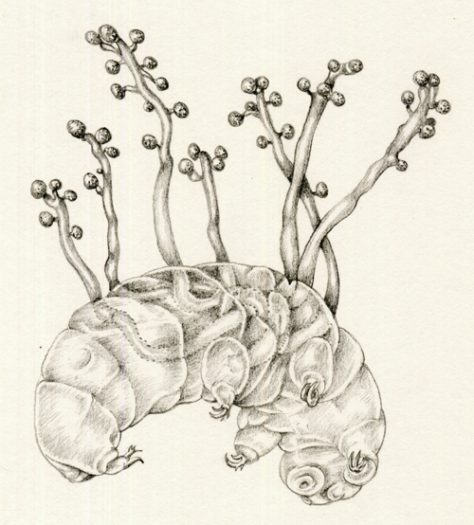
This week sees the publication of a series of graphite scientific illustrations for a book published by Bloomsbury; The Naming of the Shrew by John Wright.
This was a wonderful job as I got to work closely with the author; to work in pencil (which I love, see my blog on Pencil illustration); and had a wonderful array of species to illustrate.
In terms of style, I was told to think of the 18th century engravers; not only do I love this style, but it also meant many of the images I was using as reference were more than 100 years old, and thus I could be less worried about infringing copyright.
I used a Pentel P205 mechanical pencil with an 0.5mm H lead. What’s lovely about working with these pencils is that you can break the edge off the lead to give a fine point (more accuracy and darker lines if you use pressure) without interrupting your flow to use a pencil sharpener.
Test piece in pencil
The first one was the Common shrew. This was the test piece, and once this was accepted I was given the other species to work on.

Common shrew
Straightforward Pencil illustrations
There were plants, invertebrates, birds, mammals, fungi, fish, reptiles and micro-organisms on the list. Dreamy.
Some were comparatively straight-forward, such as the Gorilla, Greenish warbler (yes, that really IS its name), and Sundew.
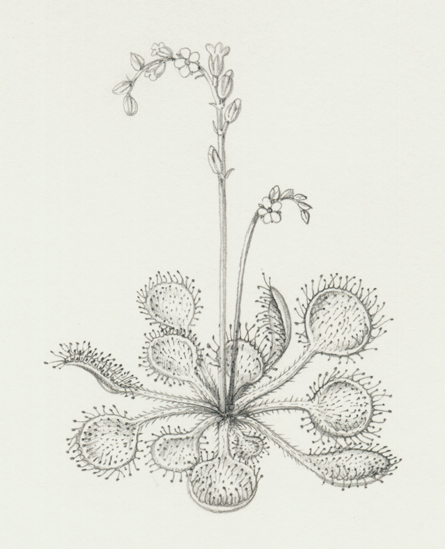
Sundew
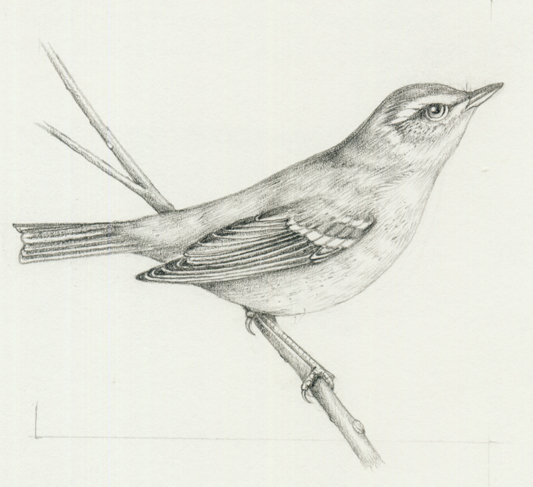
Greenish warbler
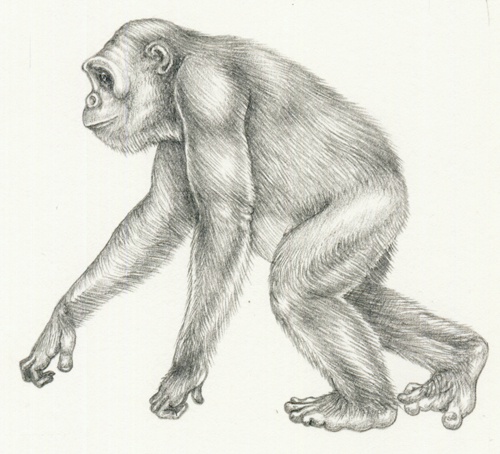
More unusual species to illustrate in pencil
Some I’d never heard of before, such as the Twinflower and the Striped Bronzeback snake.

Twinflower

Striped bronzeback snake
Finding reference for some was a challenge; the Pacific toadfish took some seeking out, and even then I was working from small and blurry photographs.
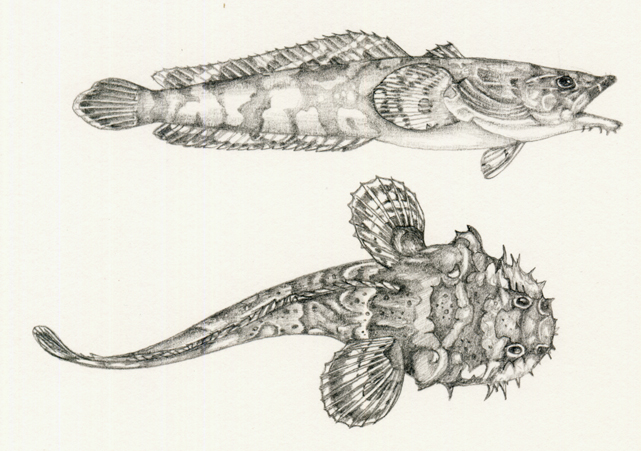
Pacific toadfish
The Guelder rose was easy to find reference for as its currently in flower. Putting all it’s life stages into one small illustration was trickier; each image is only 7.5 x 7.5cm!
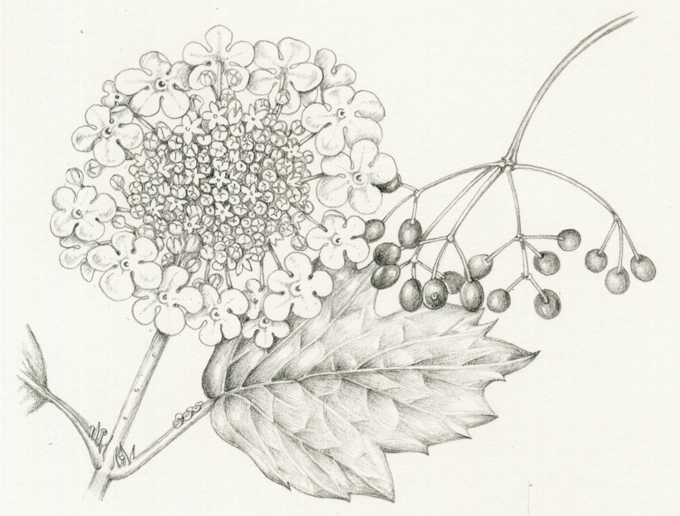
Guelder rose
There were issues of nomaclature with the marsh horsetail; it took some time to establish that it was exactly the same species as the one John had written about, which used to have a massivley long string of latin names but has now been abbreviated to Equisetum palustre.
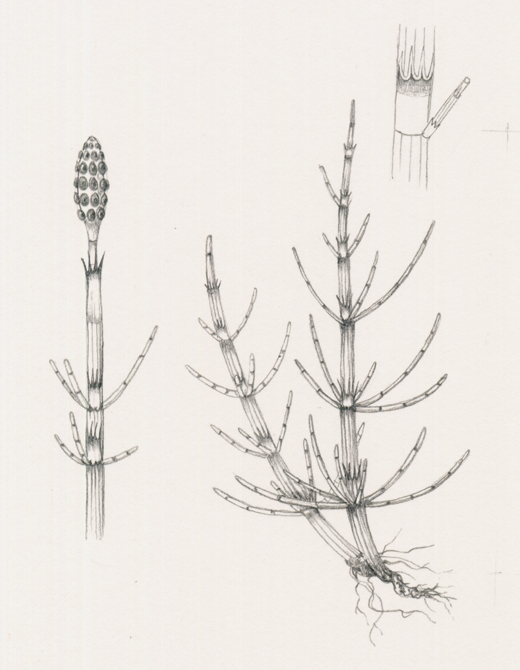
Marsh horsetail
The trickiest pencil illustrations
There were barnacles to draw; in fact, I’ll do a separate blog on the creation of this image next week; it shows how much thought can go into one illustration from both the illustrator and the comissioner.
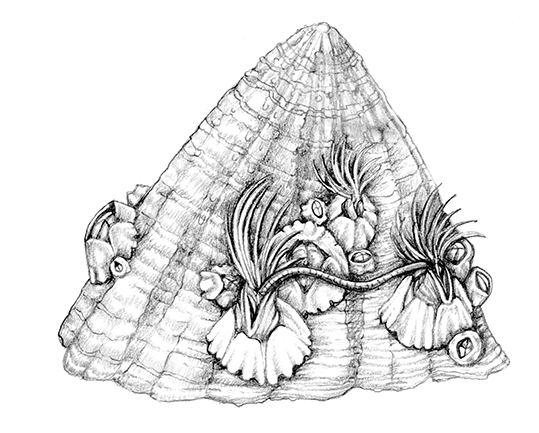
Barnacle
The Meadow waxcap is a species that the author (an eminent mycologist) is well aquainted with, and my first attempt was not so much wrong, as too non-specific.
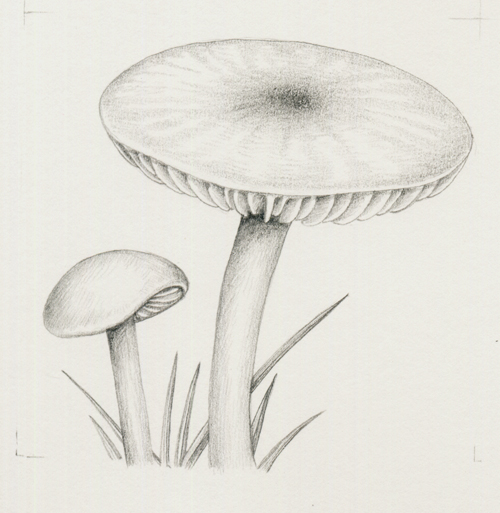
Meadow waxcap
Kindly, he sent me lots of his own reference to work from, and we were both much happier with the second version of the fungi.
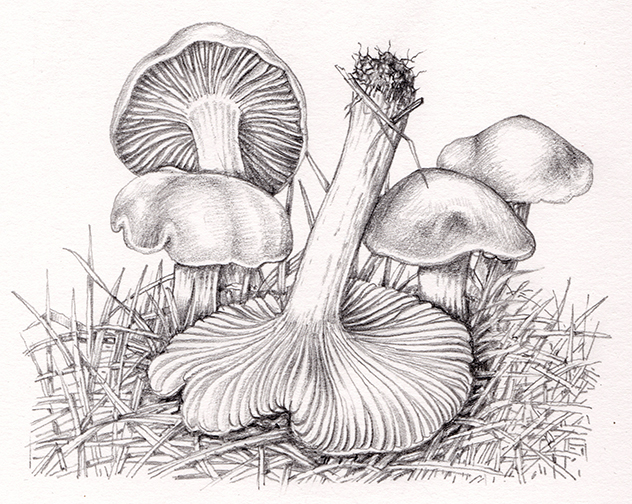
Meadow waxcap version 2
My favourite was the Ballacephala; a fungal parasite on Tardigrades. Tardigrades are known as “water-bears” and are rather endearing micro-organisms who wander about in moss. They are also incredibly tough, and, unlike any other known animal, can survive in space.
This was my first time drawing them, and it’s a little sad I had to draw one which was dead and parasitized. Piecing together the elements of this image was wonderful; refering to the 1970s paper from the Transactions of the British Mycological Society for the shape of the fungal sporangia; making sure the tardigrade was species specific (you can tell them apart by the shape of the terminal processes on their “feet”); and making sure the creature looked dead.
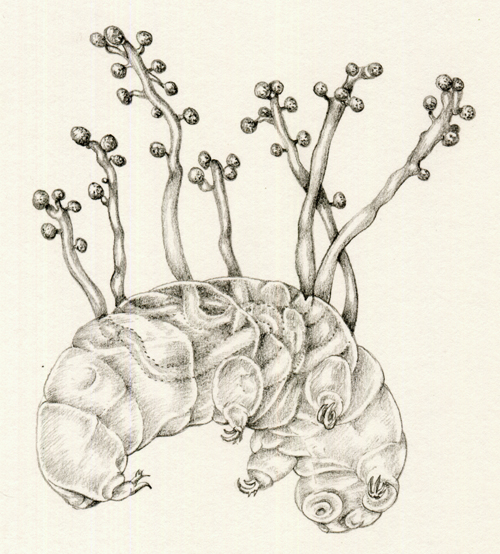
Ballocephala
I think it was a combination of the variety of subjects; the fact that I had to think quite hard about where to get reference from; and to learn about what I was illustrating that made this job so enjoyable. Working closely with the author is always a treat, and simplifies matters.
Now I’m reading the text, so many wonderful and fun facts about the latin names of plants and animals and fungi, and it’s a real treat to see my illustrations in context. What a great job!


What technique do you use when you shade with your pencil- hatching, circular ….?
I just can’t get the hang of veining and shading
Hi Virginia
I tend to try and use diagonal shading, following the lines of growth, pushing harder to get a darker tone. Circular is good for smooth areas. I avoid cross hatching, and even when working with pen and ink I tend to so lots of dots (stippling) instead of cross hatch. I just had a look at my Youtube channel and there’s nothing there showing me doing a polished pencil illustration. Probably need to fix that. Thanks for alerting me to the omission! It IS hard, the hardest bit is deciding where the lights and darks are, sometimes its super tricky to tell. But in answer to your question, I try to just follow the lines or planes of growth. And make areas just below the veins and towards the tips and margins a little darker. Thanks for asking. x